
Scriptly Helps Pharmacies Identify Trends in Real Time with Reveal
Analytical apps are designed as standalone applications or embedded analytics to simplify access and understanding of data for all users regardless of their expertise. They provide a logical and contextual view of the data that business employees work with.
Executive Summary:
More and more businesses in all different industries globally are starting to adopt the power of data to accelerate their time to insights, improve business performance and enhance data-driven decision-making.
To do that, their raw data needs to be transformed into valuable information to be intelligently utilized for business growth. This is where analytical applications come into play. With their powerful tools and techniques, analytical applications are used to collect, store and retrieve data to assist users in getting the most out of it and acting at the point of impact.
An analytical application or analytics app is a package of business intelligence (BI) capabilities, including self-service dashboards, reporting, and interactive data visualizations that provide end-users with real-time insights into their business data. This allows businesses to quickly answer performance questions and improve operations in order to make needed changes for efficiency on time.
Analytical applications are not limited to one sector or industry; they can be built, applied, or embedded in many different business applications such as marketing and sales, finance, and more.
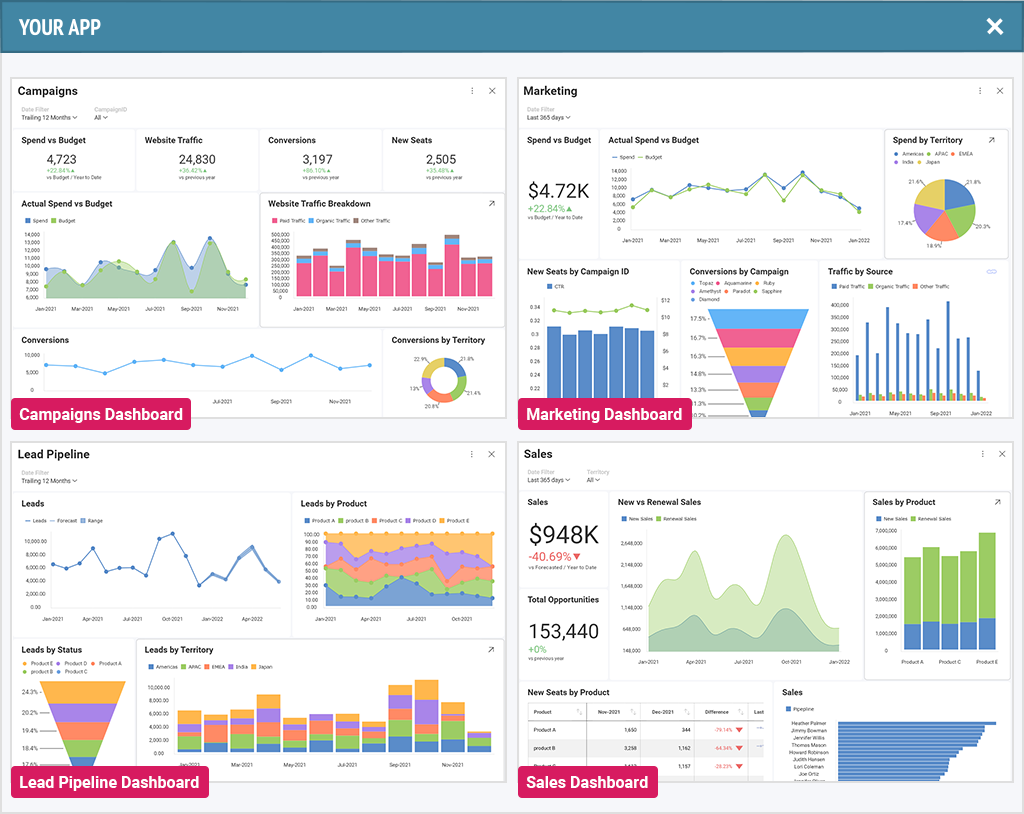
Analytical apps are designed as standalone applications or embedded analytics to simplify access and understanding of data for all users regardless of their expertise. They are ready-to-use BI tools that provide a logical and contextual view of the data that business employees work with. They help users easily access and analyze data to answer their business questions.
When embedded, data analytics applications also pack robust connectors for developers for simplified integration with their organization’s standard business applications. Depending on the solution, some analytical applications also feature predefined data models and no-code or low-code app development environments to make the integration and overall BI experience seamless.
These are some of the best benefits of analytical applications:
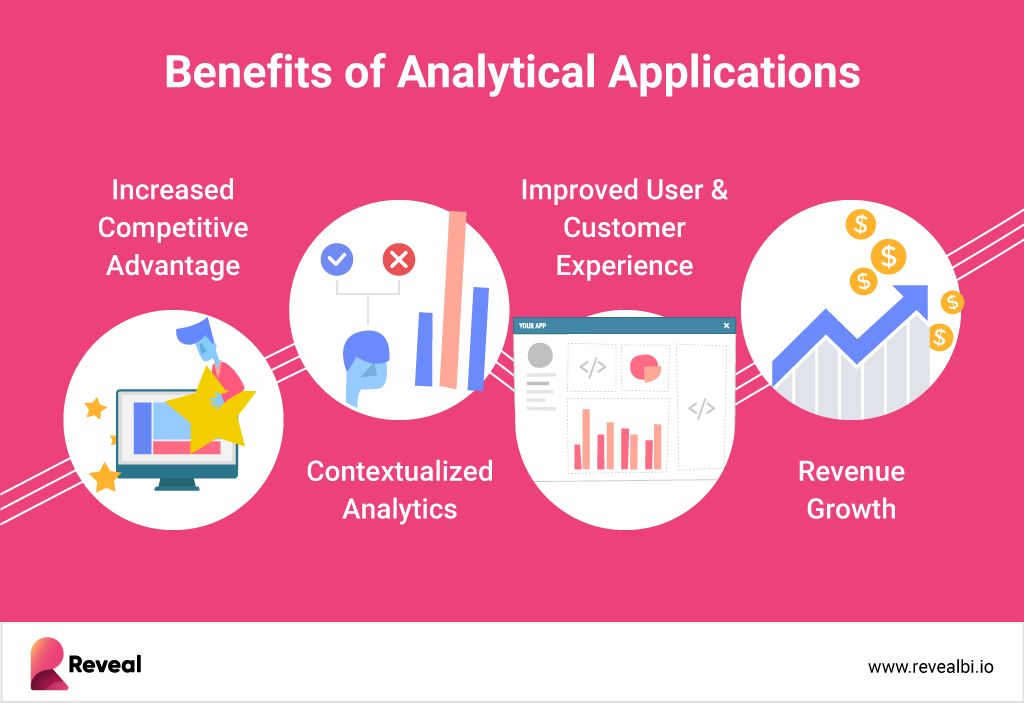
Data by itself does now always give the full value. If people are looking at rows of raw numbers, they cannot easily interpret and understand that story within the data and, therefore, cannot use it strategically to improve. Analytical applications, however, come with reporting and data visualization features that help users easily understand the information that they possess in the context of the given situation.
Providing users with real-time contextual analytics allows them to make intelligent business decisions that are backed up by facts.
One of the main benefits of embedded analytics is that it brings data analytics tools and techniques directly into the application that your users already use and are familiar with. This removes the need to jump between different apps to find the insights that they need, and instead, users can spend more time focusing on what data is telling them and acting on it.
Moreover, a good embedded analytics vendor will offer white-label capabilities as well. White labeling allows you to customize every part of the analytics solution to match your brand theme. When the analytical application feels as if it belongs, users won’t get distracted or notice a difference in your app but become more loyal and satisfied customers because of the added value you’re offering them.
While your competitors who don’t leverage or offer BI are still trying to figure it out, your business can act on or offer your customers business insights to get ahead. Data analytics applications provide a competitive advantage for both business owners and end-users. Some of these benefits include:
As a result of enabling data-driven decision-making for your customers, your customer satisfaction, application usage, and revenue streams will increase.
When your customers are happy, you would like the world to know. And there’s no better way to sell than having your customers advocate for you. Expanding your customer base will become easier and less challenging. You can also use the opportunity to sell more existing functionalities to your existing customers.
Data analytics applications have a variety of use cases; here are some examples:
Finance – data analytics apps are used in the financial industry to optimize budgeting, financial planning, forecasting, portfolio management, and more. With real-time data at users’ fingerprints, finance analytics arms CFOs with the tools they need to better understand and analyze data so they can lower costs, drive higher revenue, add more value to customers, and get ahead of the competition.
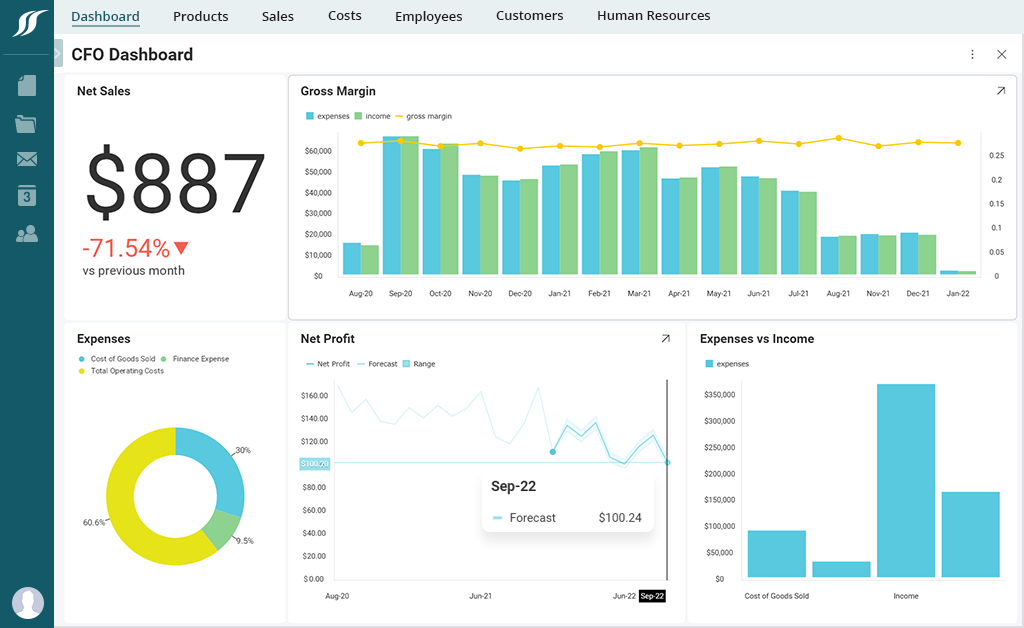
Manufacturing – application analytics tools help manufacturers monitor supplier performance, predict maintenance requirements and optimize production capacity. Manufacturing analytics collects, processes, and analyzes large amounts of data from numerous sources like machines, orders, delivery, and people to ensure quality, optimize performance and yield, reduce costs, and improve supply chains.
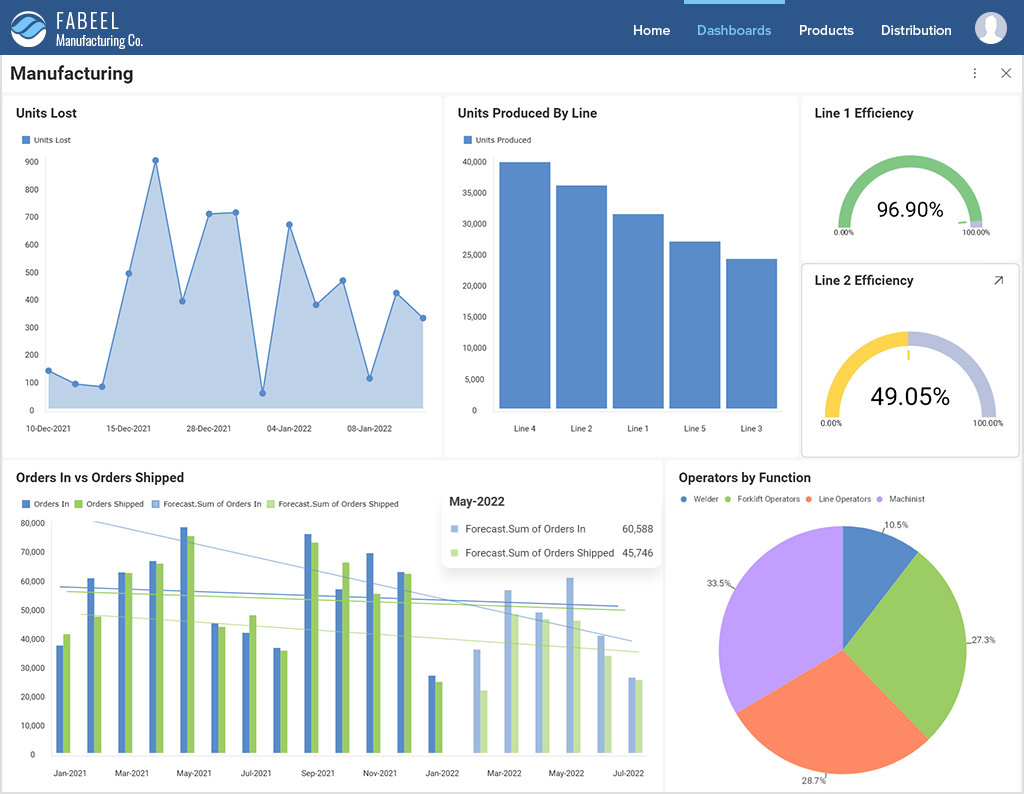
Logistics & Delivery – logistics companies like FedEx and DHL use analytical applications to manage their overall operations; they use analytics to identify the best shipping routes and delivery times, for example. In logistics and delivery, when a shipment is dispatched from its origin and until it reaches the shipping address and its buyer, every position of the item is tracked in real-time. That additionally helps delivery companies minimize the risk of loss of items.
Healthcare – data analytics applications in the healthcare industry are extremely valuable. Such tools can be used to analyze enormous volumes of information to discover treatment choices or answers for various illnesses. Predictive analytics in healthcare, for example, allows healthcare professionals to find opportunities to make more effective and more efficient operational and clinical decisions, predict trends, and even manage the spread of diseases.
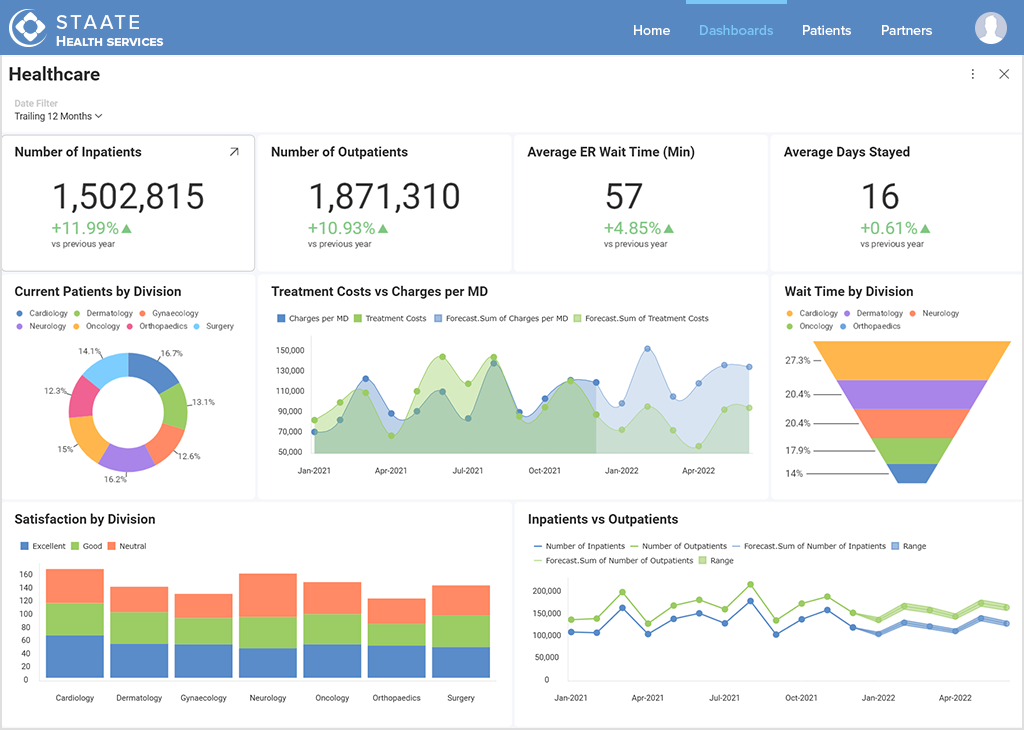
Security – analytics by itself helps companies reduce the risk of fraud and better protect their data. Such tools can identify patterns to detect and prevent fraudulent behavior so businesses can rest assured. One example is the insurance industry. Based on applicants’ past behavior, insurance analytics help companies process any claim and detect if given trends in past frauds are repeating and therefore prevent the occurrence of such.
Choosing the right data analytics application for your business is challenging, as no tool fits every need. Luckily, with some help and guidance, the process of choosing the best solution for your unique business use case can become a lot easier. To help you out on that journey, we’ve gathered this list of questions that you need to answer before investing in a vendor:
Who’s going to use the analytical application? – Will it be used by sophisticated data analysts and data scientists, by nontechnical users who need an intuitive interface, or should it suit both kinds of users? Are you going to use the analytical application for internal use or offer it to your users?
Was the solution purpose-built for embedded? – Most embedded BI and analytics vendors started out building a web or desktop-based dashboard tool. With time, many of these vendors decided to create an embedded option, enabling customers to take the app experience and deliver it in their own apps. The problem – creating an amazing, embedded experience is hard. It’s important that the experience is the same from the desktop to the web to the embedded app on every device.
Can the solution connect to all your data? – Before anything else, you need to make sure that the solution will be able to connect to all your organization’s data no matter where it lives. A good embedded analytics vendor supports a wide range of data sources that users can bring together into one view or location for a more comprehensive analysis.
Could the data analytics tool be customized? – Check if the solution offers personalization capabilities. Being able to personalize all stages of the customer journey, including the look and feel of your product, is key to customer loyalty. Invest in a solution that will allow you to customize the visual elements, such as fonts and colors, and ultimately let you create your own custom theme from scratch.
Finally, consider the price. Some data analytics applications are free, but most are paid. The most expensive tools are not necessarily the most feature-complete, so you should choose carefully. Also, many vendors use pricing techniques that later on charge customers with hidden fees, usage, and user tiers. We recommend partnering with a vendor that has clear, transparent, and publicly available pricing.
Reveal brings the power of data to the hands of your employees, customers, partners, and suppliers. It allows you to easily integrate data analytics into your application with no added requirements. Reveal’s flexible architecture and rich APIs give you control of the feature in your app, making it a seamless part of the user experience.
Reveal provides interactive dashboards, drill-downs, collaboration, sharing, and true self-service with a drag-and-drop dashboard creator experience on any device that lets anyone build beautiful dashboards in their apps.
With the power of data, you, your employees, customers, partners, or suppliers will no longer need to waste time trying to analyze spreadsheets but instead have more time to focus on the insights gathered and make choices based on facts. You can act at the right moment and never miss an opportunity by having access to real-time data.
Back to Top